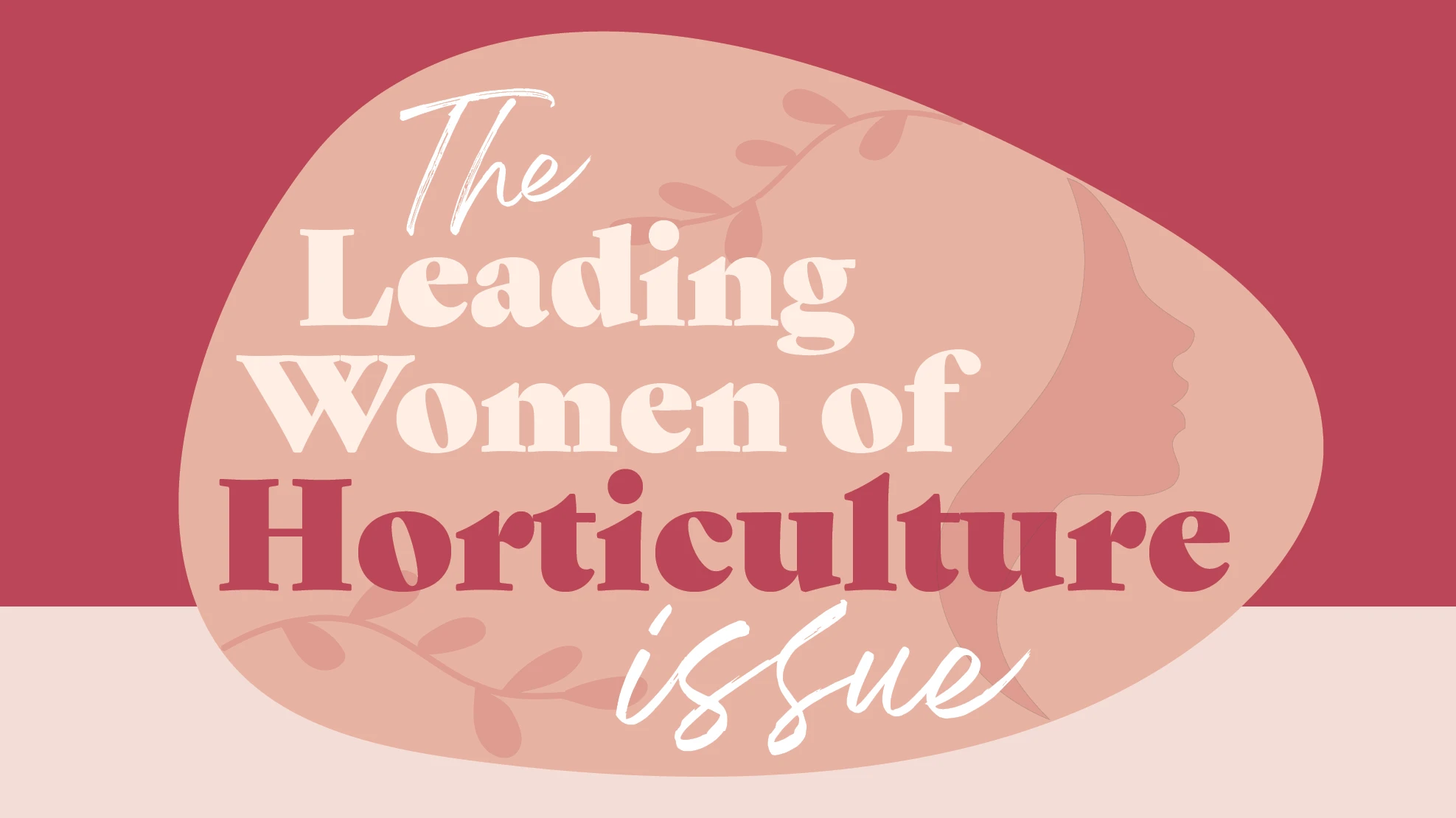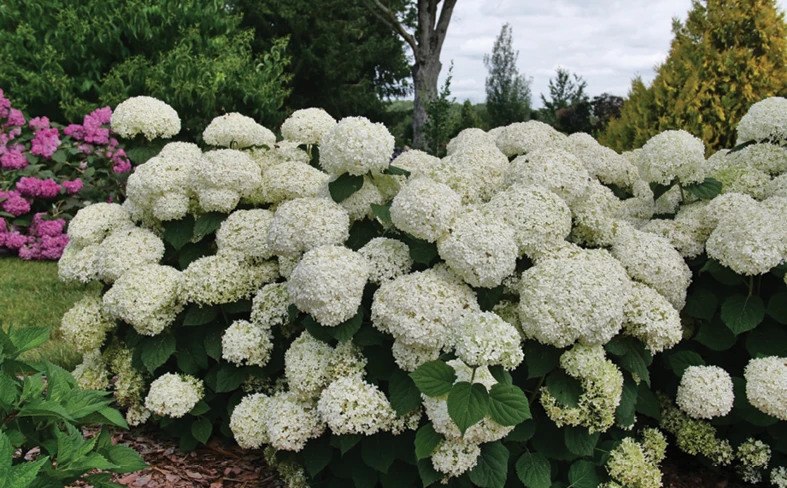

The new wave of houseplant enthusiasts aren’t your typical garden center patrons. Always on the lookout for the new and unusual, these younger shoppers are searching for the latest trending plants to add to their collections. Often, their only growing space is indoors, and for many, it’s their first foray into the growing world. Make sure you’re growing not only enough stock for your IGC customers but providing them with a lot more than just the basics.
“Houseplants are increasing pretty quickly and it’s bringing in people who aren’t necessarily our garden clientele,” says Brit Dickinson, regional manager at Riddle Plant Farm in Sand Springs, Oklahoma, where houseplant shoppers tend to be in their 30s and 40s. “They’re more of the home décor people looking to spruce up their houses and not really concerned with the gardening side of things, which is our normal customer base.”
As little as five years ago, flowering plants were the hot-ticket indoor plants at Riddle Plant Farm. But now it’s all about the foliage for the IGC, where houseplants make up 5% to 10% of sales during the spring and summer, and 40% to 50% in the late fall and winter. “We really didn’t sell enough to even have a dedicated section here in the store,” Dickinson says. “It was just kind of end caps and in just five years, we’ve seen it kind of gravitate toward foliage and leafy plants.”
At Forest Lake Greenhouses in Florence, South Carolina, houseplants and accessories account for nearly a quarter of sales. While the IGC has a broad base of customers including all age groups, more and more millennials are coming through the doors in search of houseplants. “That’s what makes me so excited — all of these young people coming in — 20-somethings and early 30s,” King says. “That’s the main demographic that’s looking at these houseplants.”
It’s the same demographic at Wingard’s Market in Lexington, South Carolina. “We have the older crowd that buys them too, but the younger crowd buys houseplants disproportionately compared to other plants,” says co-owner Delores Steinhauser. “That might be all they buy, or they at least buy some in addition to other things.”
To appeal to this younger crowd of houseplant enthusiasts, Steinhauser is using the term ‘indoor plants’ instead of houseplants, which she says can have an “old-fashioned” connotation.

Instagram-famous plants
Foliage, particularly variegated foliage, is all the rage right now as it trends on Instagram, which is a huge driver of houseplant trends and demands.
“Whatever’s trending on Instagram that year is what people look for,” Dickinson says. “It’s kind of wild how quickly it spreads the desire for plants.”
Monstera and different kinds of hoya are selling well for Riddle Plant Farm, and Dickinson says shoppers can’t get enough of variegated plants. The IGC has a great relationship with a local houseplant club, which also keeps them plugged into demands. “They kind of dictate to us what we need to look for, which is kind of nice,” Dickinson says.
While houseplants have always been a major category for Forest Lake Greenhouse, King has recently seen more and more demand for colorful leaves and different leaf variations, along with new varieties.
She says she noticed the trend starting with fiddle leaf figs. “We had not sold fiddle leaf figs for years — never even had one in the garden center or the greenhouse,” she says. “And then all of a sudden, everybody’s asking about fiddle leaf figs and looking at the magazines — there’s a fiddle leaf fig. And since then it seems like they have moved onto more plants that are featured on Instagram and social media.”
Monstera, in particular, has been trending on Instagram for quite a while (check out #monsteramonday), and the plant is in high demand at the IGC. Once monstera mania has passed, King expects houseplant buyers to move on to the next hot thing on social media.
“Instagram is driving this industry for foliage and our garden centers, no matter what age you are, need to be a part of this so we can help drive that,” King says. “We don’t want them to always control what we’re selling. We need to have some input so that we can tell them what we need to sell.”
But keeping up with ever-changing demands is difficult for garden centers. Dickinson says she has a hard time finding good sources with good availability of the trendier plants like fiddle leaf figs and monstera.
“I think once everyone gets one of the trendy plants, there’s the next unicorn that everyone is looking for,” she says. “And as it becomes more and more available, people seek the new thing because they typically just buy one or two of whatever popular item is out there.”
Wingard’s Market also has a hard time keeping monstera in stock, along with other popular plants like Chinese money plants, fiddle leaf figs and string of pearls. “Everybody just wants these fiddle leaf figs; it’s crazy,” Steinhauser says.
To increase offerings, Wingard’s Market opened a greenhouse in March of last year. Prior to that, the garden center sold houseplants outside during the spring and summer, and a few fall months. “But we never did a very good job of it,” Steinhauser says. “So, our increase in sales of houseplants is directly related to opening this greenhouse.”
In its first year with the greenhouse, Wingard’s Market did $50,000 in houseplant sales — a huge increase from the $3,000 to $5,000 in previous years’ sales.
The 3,000 square-foot greenhouse is filled at least with one-third houseplants during the peak spring and summer months. During the winter, the greenhouse is used to about half houseplants and half other flowering plants like hydrangea.
Wingard’s Market tries to place types of houseplants and accessories, like air plants and spray bottles, together in the store. “Otherwise it’s kind of rows of houseplants,” Steinhauser says. “So, we have some focal points especially for commonly asked for types of things. Otherwise folks are just walking up and down the rows looking at all the different plants.”


Explore the June 2020 Issue
Check out more from this issue and find your next story to read.







